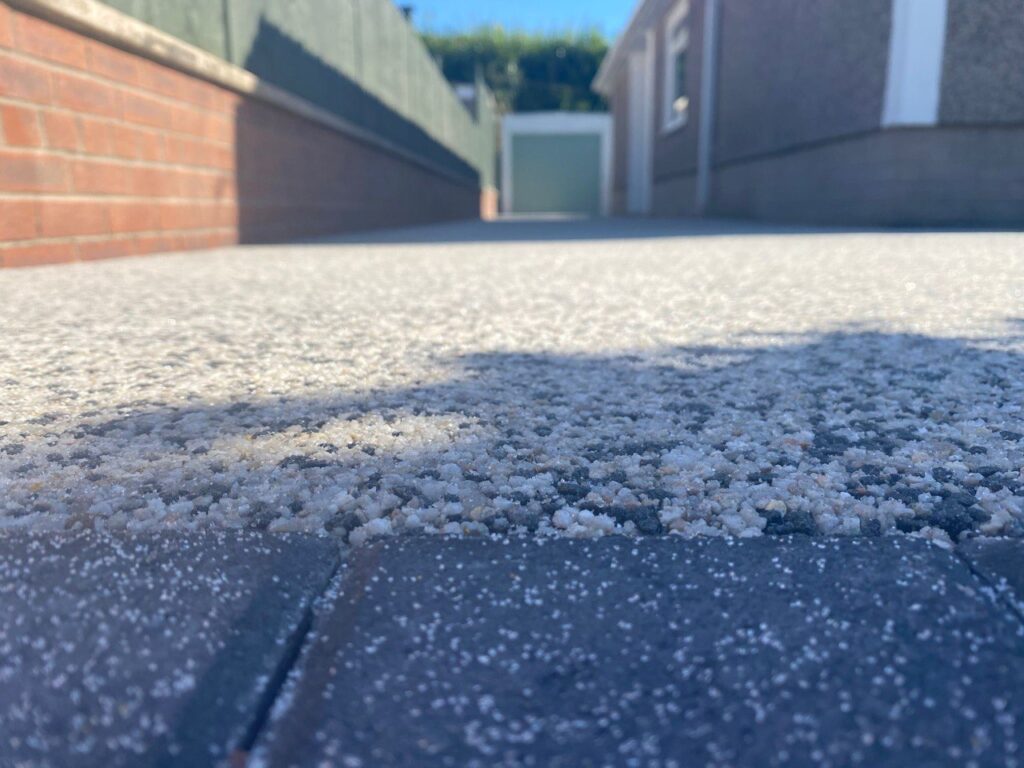How to Deal with Cracks in Your Tarmac Driveway
Tarmac driveways are known for their strength, smooth finish, and low maintenance. However, like any surface exposed to the elements, they can develop cracks over time. While these may seem minor at first, if left untreated, they can worsen and lead to more costly damage. At Maidstone Driveways & Surfacing, we help homeowners and property managers across Maidstone, Kent understand the causes of tarmac cracking and how to deal with it promptly and effectively.
This guide explains why cracks form, how to spot them early, and what steps to take to restore your tarmac driveway to its best condition.
What Causes Cracks in Tarmac?
Tarmac is highly durable, but a combination of environmental, structural, and usage-related factors can cause it to crack.
Common causes of cracks include:
- Temperature fluctuations – Expansion and contraction during freeze-thaw cycles can cause stress fractures.
- Heavy vehicle traffic – Consistent weight from large vehicles may create pressure points.
- Ageing surface – Older tarmac naturally becomes brittle and more susceptible to damage.
- Poor drainage – Water seeping into the sub-base can weaken the foundation, leading to cracking.
- Sub-base movement – Settlement or shifting beneath the surface can cause the tarmac to split.
- Tree roots – Nearby vegetation can push upwards, creating uneven or cracked surfaces.
Understanding the underlying cause is key to choosing the right repair method.
Types of Tarmac Cracks
Not all cracks are the same. Recognising the type and severity of the crack will help determine whether you need a minor patch repair or more extensive resurfacing.
Common types include:
- Hairline cracks – Thin, superficial cracks that are usually the first sign of ageing.
- Linear cracks – Longer, more noticeable cracks caused by stress or sub-base movement.
- Alligator cracks – A pattern of interconnected cracks resembling crocodile skin, indicating structural issues.
- Edge cracks – Found near the borders of the driveway, often caused by insufficient support at the edges.
At Maidstone Driveways & Surfacing, we inspect each driveway thoroughly to determine the correct solution based on the type and cause of damage.
How to Address Cracks in Your Tarmac Driveway
Acting quickly is the best way to preserve the surface and avoid expensive future repairs. Here are the most effective methods to deal with tarmac cracks.
1. Clean and Assess the Crack
Before any repair can begin, it’s important to clear out dirt, moss, and debris from the affected area. This allows for a proper inspection and ensures any filler or sealant bonds effectively.
2. Crack Filling and Sealing
For smaller or hairline cracks:
- A high-quality tarmac crack filler can be used to seal the surface.
- Sealants should be applied evenly and allowed to cure properly.
- This method prevents water from entering and causing further damage.
This is a common and cost-effective option for early-stage cracks.
3. Patch Repairs
For wider or deeper cracks:
- The damaged section is cut out and filled with fresh hot tarmac.
- It is then compacted and levelled to match the surrounding surface.
- This method is suitable for isolated cracks that don’t affect the entire driveway.
Patch repairs are ideal for medium-level damage and extend the life of the driveway without full resurfacing.
4. Resurfacing
If cracks are widespread or the tarmac is generally deteriorating:
- A new layer of tarmac can be laid over the existing surface (provided the base is sound).
- This restores the driveway to a like-new condition.
- Resurfacing also gives you the opportunity to improve the appearance and functionality of the area.
We often recommend this approach for older driveways showing signs of fatigue or surface instability.
5. Replacing Sections or Full Excavation
In cases where the underlying base has failed:
- Excavation of the damaged area may be necessary.
- A new sub-base is installed to correct drainage or stability issues.
- Fresh tarmac is then laid, ensuring long-term durability.
This is typically required for large structural cracks or severely damaged driveways.
Preventative Maintenance Tips
Preventing cracks from forming in the first place is always preferable. Regular maintenance helps keep your driveway in excellent condition year-round.
Maintenance tips:
- Sweep the driveway regularly to remove debris and moss.
- Keep edges supported with kerbs or edging stones.
- Check for early signs of wear or drainage issues.
- Reapply protective sealant every few years to extend surface life.
- Avoid parking heavy vehicles in the same spot continuously.
Maidstone Driveways & Surfacing offers maintenance plans for homeowners in Maidstone, Kent to help prevent damage and keep driveways performing well throughout the seasons.
Conclusion
Cracks in your tarmac driveway may start small, but if ignored, they can lead to much bigger problems. Whether you need a simple crack fill, patch repair, or complete resurfacing, addressing the issue early saves time, money, and hassle.
If your driveway in Maidstone, Kent is showing signs of cracking, contact Maidstone Driveways & Surfacing. Our team provides honest advice, high-quality repairs, and long-lasting resurfacing solutions to keep your property looking its best and functioning safely.
Call us on: 01622 938 289
Click here to find out more about Maidstone Driveways & Surfacing
Click here to complete our contact form and see how we can help with your driveway needs.

